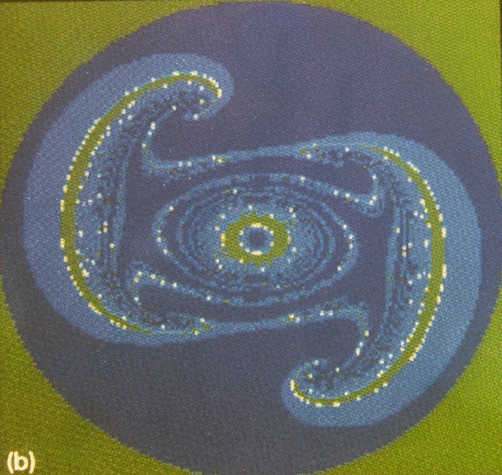 |
 |
Magnetic monopoles are particles existing in our most successful grand unification theories. Most particles in unified field theories are point-particles', i.e., they are zero dimensional objects with no internal structure. The magnetic monopole i s an exception in that it conforms to what both scientists and laymen expect a 'particle' to look like: a solid ball.
Recently, using massively parallel computers, it became possible to study the motion of two interacting magnetic monopoles in an otherwise empty space. Since the monopole is not rigid (it can be deformed), this problem is rather difficult and can lead to unexpected results, as suggested by our plate. A motion is determined by: the distance separating the two monopoles, and the initial momenta. All possible separations and momenta can be shown to form a smooth surface, called a 'reduced phase space'. W e have colored each point on the reduced phase space according to the rate at which the monopoles escape to infinity (dark blue: signifies a quick escape; light blue: not as quick; light green: a slow escape; dark green: bounded). The image displays the surprisingly intricate pattern found on the reduced phase space.